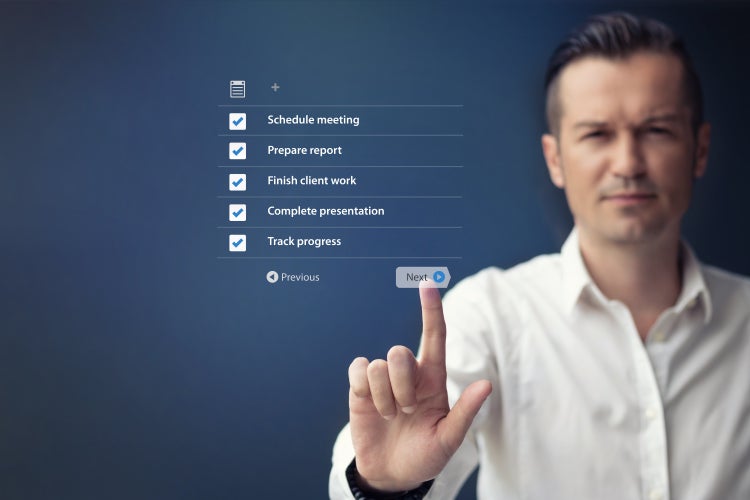Remote Management: 15 Best Practices for Leaders

The demand for leaders with remote management skills is increasing. While remote work was already on the rise, the COVID-19 public health crisis dramatically increased the amount of people working from home.
In 2020, the mandatory social distancing rules enforced by governments across the world have forced many businesses to function outside of the traditional office environment. Managers are looking for ways to manage their staff from a distance while keeping morale high.
We are currently living in an Information Revolution. This period of economic, social and technological change has eclipsed the Industrial Revolution and created an economy that is increasingly reliant on the exchange of information. What does this shift in the economy mean for the traditional workplace?
The majority of information is shared online and has opened the door for occupations that can be entirely performed from a computer at home. As of 2020, approximately 5 million American employees worked online half of the time or more, and 80% of employees reported that they want to work from home at least some of the time.

The Importance of Remote Management
Clearly, more Americans are currently able to complete their roles online and an increasing number of Americans would like to spend more time working remotely. Companies and employers need to accommodate these changes by finding effective ways to manage teams remotely.
Remote management is the set of strategies that effective leaders will use to guide, monitor and track the success of their teams.
Employees are trying to familiarize themselves with new technologies like Zoom conference calls or Google Hangouts chat rooms. There are a number of best practices that can be used to make remote management easier for leaders.

1. Trust Your Team
Some managers may feel skeptical about allowing their employees to work remotely, fearing that a home environment will reduce productivity and accountability. Successful remote management must involve a sense of employer to employee trust.
Employees do not want to feel like their boss is checking in on them constantly to ensure they’re still doing their job. Trust involves giving staff space to complete their jobs, with confidence in those staff members to be honest from their remote location. Here’s a few ways to establish that trust:
- Determine expectations with your staff and align on what their workday should look like. How many projects do you expect them to complete in a given week?
- Track the progress of these projects and create transparency around expectations met and expectations missed.
- Be realistic about distractions. Employees in the office have periods of time where they just need to get some fresh air and go for a walk, take a lunch break or chat with coworkers at the water cooler.
Remote management does not mean demanding that employees remain glued to their computers all day. Communicate that taking regular breaks is still encouraged. This will create a mutual respect and understanding between employer and employee.

2. Make Time for Small Talk
Small talk is a natural part of human interaction and can create opportunities for bonding and a deeper connection with staff. In an office environment, small talk feels easy and can jump-start a meeting or precede a one-on-one. It’s easier to cut to the chase in a video conference or phone call and bypass this important opportunity.
Remote management should preserve the importance of small talk. One of the concerns many managers have when transitioning to remote work is the collapse of company culture. Something as simple as small talk can help coworkers remain personal from afar.
Isolation and lonelin/ess are real consequences of improperly managed remote work. During challenging times, such as the coronavirus, more people are isolated in their homes and seeking ways to connect with friends and family online.
The workday can also act as a safe space for sharing concerns or updates about day-to-day life to quell feelings of isolation and create a workplace community.
Remote management best practices should involve encouraging employees to spend a few minutes catching up. Managers can lead by example and start a formal meeting with a few casual questions to prompt others to share.

3. Use Reliable Technology and Tools to Enable Remote Management
There is a wide selection of online technology and tools that make working remotely easier than ever before. Managers should investigate the best platforms for their company and company size to determine which technology will fit their team.
A piece of technology should either fit into existing workflows or enable more streamlined and efficient workflows. The following tools are excellent in enabling remote management:
Communication Applications
Collaboration Tools
Video Conferencing Platforms
Project Management Systems
HR Software

4. Focus on Goals, Not Activity
Remote management means not only managing people but managing the tasks that people are responsible for. Although managers should not turn to micro-managing to cope with a remote work situation, they should track the progress of each team member’s goals.
The truth is, some individuals are more productive than others while working from home. One employee may complete a task in half the time of another.
The employee that takes longer to accomplish their task should not be penalized as long as they’re continuing to hit their targets and accomplish goals.
There are three ways leaders in remote management positions can accomplish this:
1. Create company objectives: Company objectives should create a clear roadmap of where the company should be in 3-5 years’ time. Employees’ goals should ladder up to these larger objectives so their roles are infused with a greater sense of purpose. Maintain full transparency around the company’s vision. This will not only inspire the team but motivate team members to contribute to the future success of the organization.
2. Prioritize goals: It’s not uncommon that an employee dedicates too much time and effort to the wrong priority. Clearly outline priorities to the team on a weekly basis so your employees know which tasks should be completed first or given the most effort and attention. Time and resources are valuable and should be distributed in a way that makes sense for the larger company objectives.
3. Promote accountability: Remote management leaders can promote accountability by tracking the progress of goals. Each employee or team is responsible for a set of goals. Managers should regularly check in on the progress and results of each goal to ensure things are moving on pace.
If a project is moving behind schedule, this is an opportunity to host a meeting to discuss the roadblocks or obstacles that could be contributing to this lag. Remote management leaders should be helpful, not accusatory. Brainstorm solutions or resources that could better support this team.

5. Create a Virtual Water Cooler
A virtual water cooler is a place where employees can “meet” online and exchange non-work related banter. This chitchat is commonplace in offices and creates bonds in the workplace, helps teams function well together and solidifies a team mentality and sense of camaraderie.
Leaders in remote management roles should set up a virtual space for their staff to create this community. An excellent way to accomplish this is through online communication tools such as Slack.
Slack allows managers to create custom channels. These channels are often reflective of specific clients or projects and create a virtual exchange where people can share their work, revisions and client updates.
Managers can also create a non-work related channel such as the “Water Cooler” channel where employees can chat with one another about personal updates, interesting news articles, new music and more.
Other online communication tools may provide similar capabilities. The key to this remote management practice is giving staff a place to create team relationships.

6. Create Clear Remote Management Processes
It’s inevitable that transitioning from the office to remote work will revise workflows. Remote management should involve close attention to current processes and ways to use technology and clarity to improve upon these workflows in a remote setting.
The first process that must be established is how to communicate remotely. Emails have long been used to create threads, cc people and loop in about projects, however, new tools are making virtual communication much easier.
Slack, Google Hangouts and Flock—to name a few—allow teams to chat instantly, open one-on-one IMs, share files and open access to multiple team members. Managers should consider onboarding new technology to streamline communication processes for remote management.
Yet another process that should be considered is the collaboration process. Tools such as Google Drive allow teammates to access essential projects and files in one place. Software developers have also created tools that are industry-specific.
For example, InVision is a collaboration tool created especially for designers that allow a simple exchange of wireframes, interactive mockups and designs.
Remote management can be made easier by creating processes for all areas of the business, including communication, file sharing, collaboration, project management and HR responsibilities.

7. Be Responsive and Available
One of the most essential interpersonal skills for effective leaders is the ability to actively listen and show dependability to staff. Remote management can be tough when leaders are not as visible to their employees.
In an office, teammates can see when their team manager is in the office or out for meetings. An important remote management technique is to create this same transparency when online. This can be accomplished through technology. Many communication platforms allow you to mark your status as available, busy or out of office.
Another important best practice is to be as responsive and available as possible. Create a virtual “my door is always open” atmosphere by welcoming questions from the team and encouraging people to reach out virtually.
Go the extra mile and schedule one-on-one calls with team members. If you have the bandwidth, try to make these weekly occurrences. It’s easier to gauge how employees are coping with remote work when they have your undivided attention.

8. Train Remote Workers With an Online E-Learning Course
If remote working is a new concept for employees, especially in the case of an abrupt transition caused by factors such as the coronavirus, leaders could assign mandatory e-learning courses on effective remote work strategies.
A company called FutureLearn hosts several e-learning courses including “Collaborative Working in a Remote Team.”
Remote management is enabled by knowledgeable staff. These courses can teach teams how to prepare to work remotely, create a remote working plan, manage time, workload and projects and explore tools and resources that make working remotely easier.
LinkedIn Learning also offers a number of courses to help with remote management and remote working. They offer a number of courses built for employees such as “Productivity Tips: Finding your Productive Mindset” and “Time Management: Working from Home.”
They also offer courses created for remote management skill development, including: “Leading at a Distance,” “Managing Virtual Teams” and “Leading Virtual Meetings.”

9. Create Remote Management Work Policies
As mentioned in point No. 1, it’s essential that managers hire employees they trust and trust the employees they hired, however, developing a template for remote work policies can support company expectations and put these expectations on paper.
All employees are required to abide by these policies to ensure company-wide compliance. What should remote work policies include? The following company policies are a good jumping-off point for formulating a document:
- Attendance and work hours
- Social media usage
- Confidentiality
- Data protection
- Employee code of conduct
- Anti discrimination/equal opportunity
The above policies demonstrate the basic requirements that all employees must abide by. Each company can tailor these policies to align with their company values.
In addition to these basic policies, remote management should involve the implementation of remote-specific policies that must be followed by employees at home, including:
- Maintaining a distraction-free working space
- Having a secure and reliable internet connection
- Attending to job duties throughout working hours
- Conforming to expected break frequency and times
- Ensuring schedules overlap with those of other team members

10. Establish a Culture of Ownership and Accountability
Employees tend to enjoy work more when their own needs and values align with the company they work for. Many successful companies create distinct mission statements and promise a certain company culture.
For example, Facebook’s mission statement is to “give people the power to build community and bring the world closer together. People use Facebook to stay connected with friends and family, to discover what's going on in the world and to share and express what matters to them.”
Facebook reflects this mission statement in their values which include: Be bold; Focus on impact; Move fast; Be open; and Build social impact. Facebook’s hiring strategy, company culture, perks and benefits, office layout and communication all reflect this core mission statement and supportive values.
If you seek to engage in successful remote management for a prolonged period of time, it’s important to include personal accountability into your company’s value system. In the future, HR will look for traits of accountability in future hires and managers will stress the importance of project ownership and accountability to existing employees working remotely.

11. Automate Anything That Can be Automated
Automation is the key to streamlining workflows and making remote management painless. The good news is, increasing tools and technologies have allowed automation to be present in almost every online workflow.
If you work in Marketing and Advertising, there are applications that can automate email deployment, deadline reminders and social media posts. If you are in healthcare, there are applications that can automate patient booking, online scheduling, payments and follow-ups.
Automation removes the majority of administrative tasks that act as a time suck.

12. Send Physical Swag, Cards or Letters in the Mail
How do you make remote workers feel like part of the team? Sometimes remote management can involve a thoughtful gesture such as sending remote workers company swag, cards or letters through the mail.
Of course, sending a quick email inviting an employee to a company event or wishing a teammate “Happy Holidays” would do the trick, but sending a tangible message is often more impactful.
Sending swag, cards and letters is especially important if you manage a team that is composed of in-office employees and remote employees. The remote employees often miss out on the little things such as Bagel Monday, Pizza Friday or the surprise delivery of branded sweaters.
A personalized care package or card can make remote employees feel like an extended part of the team and increase overall employee satisfaction.

13. Host Virtual Team-Building Activities and Retreats
Team building is another important practice that increases employee satisfaction, boosts morale and strengthens coworker relationships over time. Some companies host team-building retreats where they invite the team to a location off-site to participate in fun activities and discuss the company's larger objectives and quarterly goals.
However, some remote workers could be based in an entirely different country, which is why virtual team building has been used for remote management.
How can you host fun team-building activities remotely? There are a number of ways to engage employees from afar. One way is through technology plug-ins custom made for team building. Here are a number of creative ideas that help teams bond online:
- Office Games: Websites like Teambuilding.com offer virtual games with activities like storytelling workshops, typing competitions, spreadsheet pixel-art and more.
- Virtual Campfire: An organization called Tiny Campfire allows teams to have virtual campfires that include ghost stories, icebreakers and competitions. The company even sends employees s’mores ingredients, a tiny candle and team colors to make the experience memorable for everyone.
- Team-building Bingo: Companies can create custom Bingo templates that are filled with typical work jargon or jokes such as “worn pajama bottoms during a workcall.” Any player who is guilty for saying or doing the listed phrase can add a Bingo chip.
- Random Channel: Adding a “Random Channel” to your team’s communication tool can open up candid conversations and create space for people to share pictures of their pets, chat about the best new bands in town or simply engage in small talk.
- Virtual Book Club: Team members could start a virtual book club and host video conference calls to discuss.
- Virtual Gappy Hour: Companies could host a Friday virtual beers session where employees have a group video chat and cheers to the weekend.
- Virtual Workout Class: Active employees could enroll in an online yoga class or virtual Zumba session and sweat it out together for motivation.

14. Hold Q&A Sessions
Remote management can be made easier by offering a weekly Q&A session. At Facebook’s head office on Friday afternoons, Mark Zuckerberg hosts an “all-hands” meeting where employees are encouraged to ask candid questions.
Facebook even encourages their employees to submit anonymous questions beforehand in case they’re not comfortable raising their hand and presenting the topic in person.
According to Business Insider, “Facebook puts a strong emphasis on having an open and transparent culture and the weekly exec Q&As with the employee-submitted questions are a big part of that.”
Why are Q&As so important? Not only do question and answer sessions help employees express their concerns and gain new information, they also help executives learn more about their people and gain insight into what their team is interested in.
Many question and answer sessions open doors for company innovation. Remote management could be strengthened by a regular Q&A. Remote workers have less opportunity to stroll over to their manager and ask those hard questions, which is why keeping communication open is essential.
Remote management should prioritize curiosity and active listening. If possible, emulate Facebook’s model and create a platform for anonymous questions and answer the questions on a video call.

15. Host In-Person Company Events Periodically
Although working remotely and engaging in remote management can be done 100% online, hosting an occasional in-person event can help strengthen team bonds and foster workplace satisfaction.
Many teams opt for holidays such as Christmas to gather and celebrate team success with a dinner and party. Other teams prefer to plan team-building retreats in the summer to encourage social bonding, outdoor activities and company goal planning.
Company events don’t need to be boring. You can plan a fun-filled event that will reduce employee stress and boost workplace morale. The following are creative company activity ideas:
- Scavenger hunt
- Cook-off
- Board game tournament
- Karaoke night
- Go-kart racing
- Trampoline park
- Sports game
- Volunteering
- Laser tag
- Escape room game
- Professional development workshop

Develop Remote Management Skills as a Leader With an Online MBA
You can become a well-rounded professional and learn how to lead in a variety of business environments, including in a position of remote management. St. Bonaventure University’s fully accredited online MBA goes beyond the traditional Master of Business Administration.
Students cultivate specialized knowledge, lead more effectively, improve decision-making skills and use a global mindset to overcome big-picture business challenges.
Learn how to become a more effective leader with an online MBA degree from St. Bonaventure University.
Read more of St. Bonaventure University's Top blog posts below:
1. Coping With Isolation: 25 Strategies for Optimizing Mental Health
2. Integrated Marketing Communications Plan: What is it?
